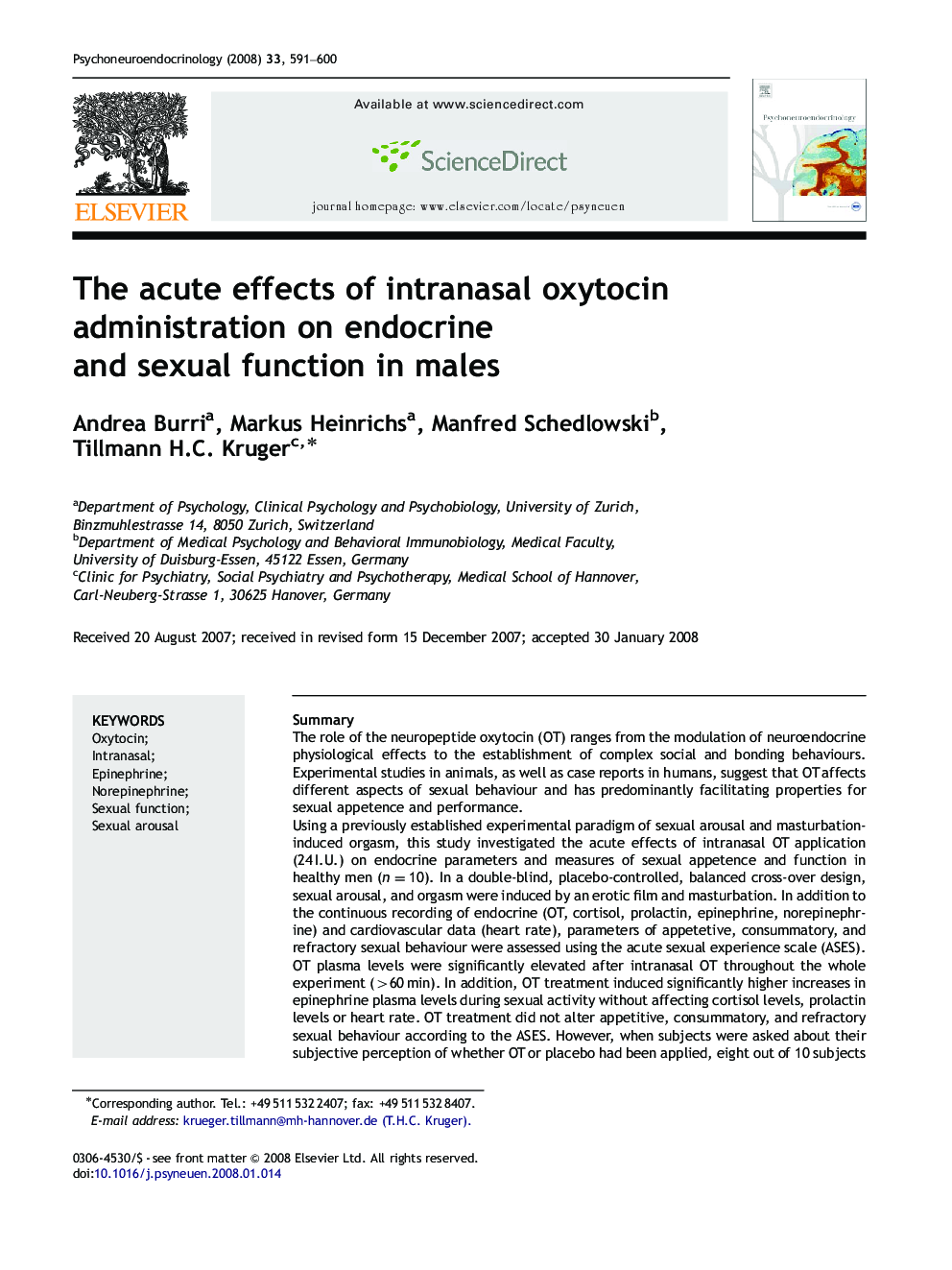| Article ID | Journal | Published Year | Pages | File Type |
|---|---|---|---|---|
| 336807 | Psychoneuroendocrinology | 2008 | 10 Pages |
SummaryThe role of the neuropeptide oxytocin (OT) ranges from the modulation of neuroendocrine physiological effects to the establishment of complex social and bonding behaviours. Experimental studies in animals, as well as case reports in humans, suggest that OT affects different aspects of sexual behaviour and has predominantly facilitating properties for sexual appetence and performance.Using a previously established experimental paradigm of sexual arousal and masturbation-induced orgasm, this study investigated the acute effects of intranasal OT application (24 I.U.) on endocrine parameters and measures of sexual appetence and function in healthy men (n=10). In a double-blind, placebo-controlled, balanced cross-over design, sexual arousal, and orgasm were induced by an erotic film and masturbation. In addition to the continuous recording of endocrine (OT, cortisol, prolactin, epinephrine, norepinephrine) and cardiovascular data (heart rate), parameters of appetetive, consummatory, and refractory sexual behaviour were assessed using the acute sexual experience scale (ASES).OT plasma levels were significantly elevated after intranasal OT throughout the whole experiment (>60 min). In addition, OT treatment induced significantly higher increases in epinephrine plasma levels during sexual activity without affecting cortisol levels, prolactin levels or heart rate. OT treatment did not alter appetitive, consummatory, and refractory sexual behaviour according to the ASES. However, when subjects were asked about their subjective perception of whether OT or placebo had been applied, eight out of 10 subjects in the OT group answered correctly, thus pointing to an altered perception of arousal.In conclusion, intranasally administered OT leads to a marked increase in OT plasma levels together with increased secretion of catecholamines when subjects are engaged in sexual activity in a laboratory setting. As the effects of OT on sexual behaviour were equivocal, future studies should examine possible facilitating effects further by including males, females, and couples in a field setting, taking into account that OT exerts the most prominent behavioural effects in pair bond formations.
